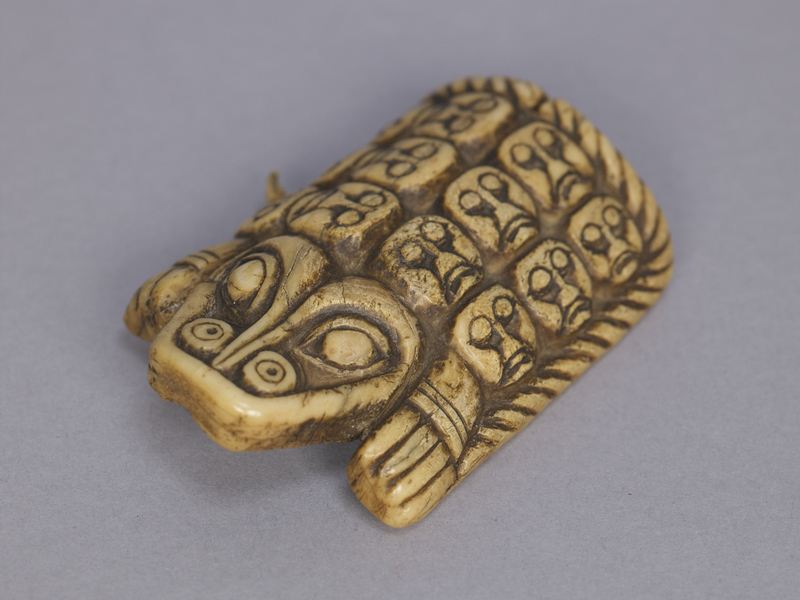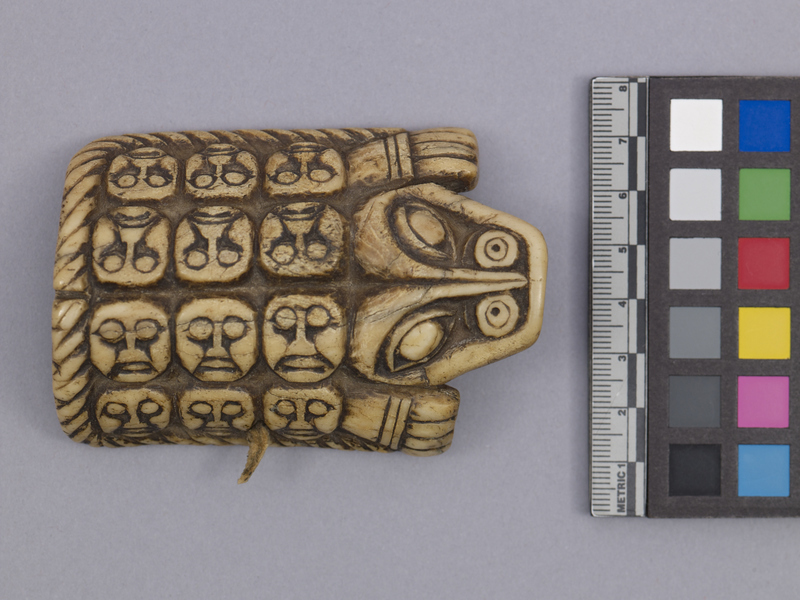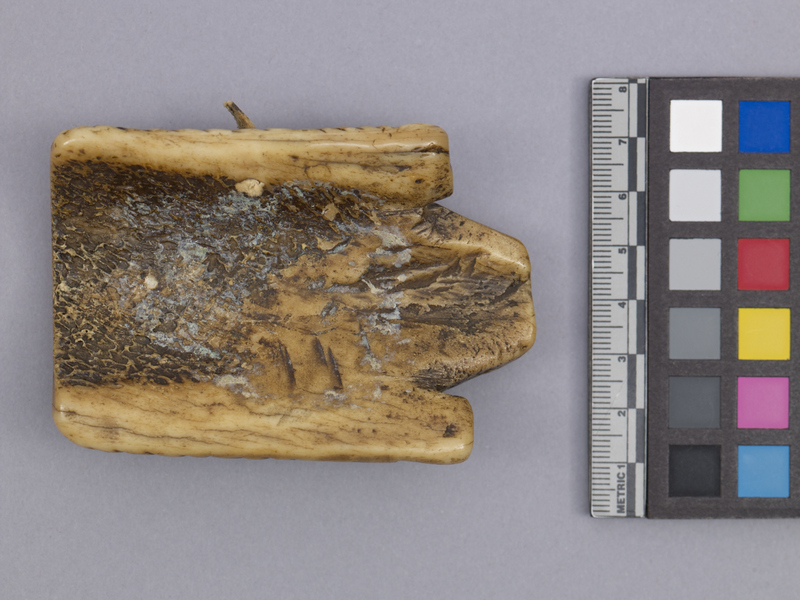Amulet Item Number: 3260/48 from the MOA: University of British Columbia



Description
Bone amulet in animal (frog or toad?) form with wide, toothless mouth, large eyes, and forelegs positioned on either side. The back is carved with twelve faces - divided into two groups facing opposite directions of two rows of three faces. Small remnant of a hide cord at one side. Three sides are bordered with a twisted rope design.
History Of Use
By the late 1800s, few traditional healers were still openly practicing among the Tlingit due to the combined impacts of new epidemic diseases, Christianization, and modernizing ways of life. Ethnographic collectors like Lt. George T. Emmons capitalized on those changing times, obtaining for American museums a wide range of shamans’ paraphernalia. Aided by documentation shared by Tlingit knowledge holders at the time, the resulting collections have become the basis for current understandings of amulets like this one, although many unanswered questions remain. Today, artists and other Tlingit community members continue to find connections to them – at times a fraught encounter, given the spiritual power and historical context of these powerful, transformative belongings.
Narrative
This small amulet was likely made to be worn around the neck of a Tlingit ixt’: a shaman or healer. The charm would have been strung on a leather cord, quite possibly alongside other amulets made of ivory, bone, or wood that together would make a rattling noise as the wearer went about his or her specialized work. Often carved to represent specific animals or spirit helpers encountered by the shaman in dreams or trances, all such amulets had a purpose other than ornamentation: to protect the shaman and allow him or her to become a conduit for balance and reciprocity between humans and spirit forces.
Item History
- Made in Alaska, USA between 1840 and 1860
- Owned by Elspeth McConnell before August 12, 2017
- Received from Elspeth McConnell (Donor) on August 12, 2017
What
- Name
- Amulet
- Identification Number
- 3260/48
- Type of Item
- amulet
- Material
- bone and rawhide skin
- Overall
- height 2.3 cm, width 8.8 cm, depth 6.0 cm
Who
- Culture
- Tlingit
- Previous Owner
- Elspeth McConnell
- Received from
- Elspeth McConnell (Donor)
Where
- Holding Institution
- MOA: University of British Columbia
- Made in
- Alaska, USA
When
- Creation Date
- between 1840 and 1860
- Ownership Date
- before August 12, 2017
- Acquisition Date
- on August 12, 2017
Other
- Condition
- good
- Accession Number
- 3260/0048